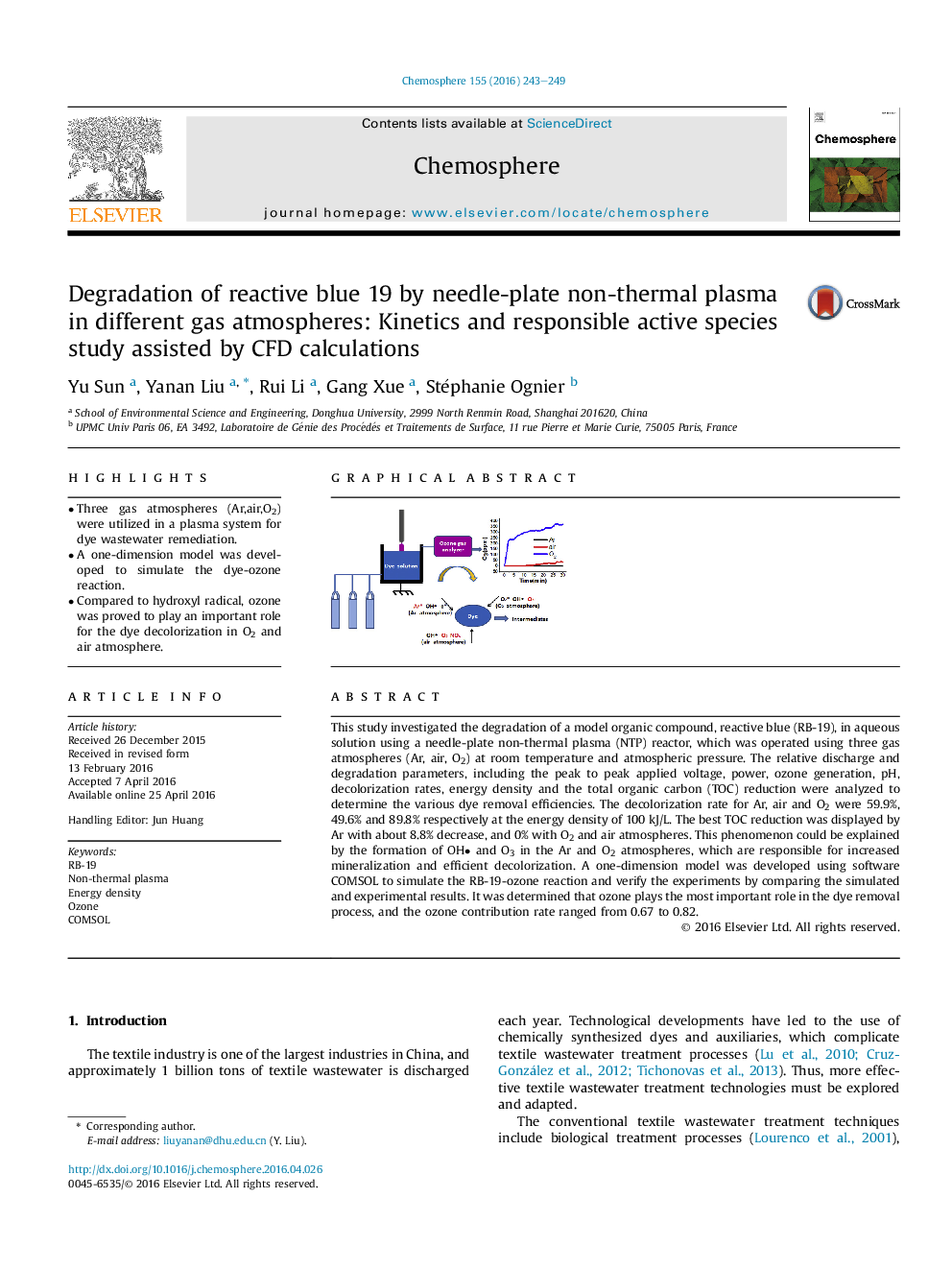| Article ID | Journal | Published Year | Pages | File Type |
|---|---|---|---|---|
| 4407548 | Chemosphere | 2016 | 7 Pages |
•Three gas atmospheres (Ar,air,O2) were utilized in a plasma system for dye wastewater remediation.•A one-dimension model was developed to simulate the dye-ozone reaction.•Compared to hydroxyl radical, ozone was proved to play an important role for the dye decolorization in O2 and air atmosphere.
This study investigated the degradation of a model organic compound, reactive blue (RB-19), in aqueous solution using a needle-plate non-thermal plasma (NTP) reactor, which was operated using three gas atmospheres (Ar, air, O2) at room temperature and atmospheric pressure. The relative discharge and degradation parameters, including the peak to peak applied voltage, power, ozone generation, pH, decolorization rates, energy density and the total organic carbon (TOC) reduction were analyzed to determine the various dye removal efficiencies. The decolorization rate for Ar, air and O2 were 59.9%, 49.6% and 89.8% respectively at the energy density of 100 kJ/L. The best TOC reduction was displayed by Ar with about 8.8% decrease, and 0% with O2 and air atmospheres. This phenomenon could be explained by the formation of OH• and O3 in the Ar and O2 atmospheres, which are responsible for increased mineralization and efficient decolorization. A one-dimension model was developed using software COMSOL to simulate the RB-19-ozone reaction and verify the experiments by comparing the simulated and experimental results. It was determined that ozone plays the most important role in the dye removal process, and the ozone contribution rate ranged from 0.67 to 0.82.
Graphical abstractFigure optionsDownload full-size imageDownload as PowerPoint slide
